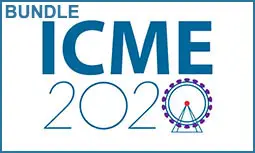Medical Image Super-Resolution via Granular Multi-scale network in NSCT Domain
Yu Sang, Jinguang Sun, Simiao Wang, Keqiu Li, heng Qi
-
Members: FreeSPS
IEEE Members: $11.00
Non-members: $15.00Length: 09:08
09 Jul 2020
High-resolution (HR) medical magnetic resonance images or computer tomography (CT) images can provide clearer anatomical details of human body, which facilitates early diagnosis of the diseases. However, due to the limitations of imaging environments, imaging systems and human factors, it is not easy to obtain clear HR medical images.
In this paper, we propose a novel medical image super-resolution (SR) network, namely granular multi-scale network (GMSN), in the non-subsampled contourlet transform (NSCT) domain. GMSN mainly consists of a series of cascaded Res2Net blocks to exploit the multi-scale potential features at a granular level from medical images and increase the range of receptive fields for each network layer. The architecture possesses stronger multi-scale feature extraction ability, while maintaining a low computational load. In addition, most previous methods predict the HR images in the spatial domain, producing over-smoothed outputs while losing texture details. Thus, we formulate the medical image SR problem as the prediction of NSCT coefficients, which is able to further GMSN preserve richer structure details than that in spatial domain.
The experimental results on our constructed medical image database show that our proposed method is capable of obtaining higher PSNR/SSIM values and preserving global topological structure and local texture detail better than other state-of-the-art methods.
In this paper, we propose a novel medical image super-resolution (SR) network, namely granular multi-scale network (GMSN), in the non-subsampled contourlet transform (NSCT) domain. GMSN mainly consists of a series of cascaded Res2Net blocks to exploit the multi-scale potential features at a granular level from medical images and increase the range of receptive fields for each network layer. The architecture possesses stronger multi-scale feature extraction ability, while maintaining a low computational load. In addition, most previous methods predict the HR images in the spatial domain, producing over-smoothed outputs while losing texture details. Thus, we formulate the medical image SR problem as the prediction of NSCT coefficients, which is able to further GMSN preserve richer structure details than that in spatial domain.
The experimental results on our constructed medical image database show that our proposed method is capable of obtaining higher PSNR/SSIM values and preserving global topological structure and local texture detail better than other state-of-the-art methods.



